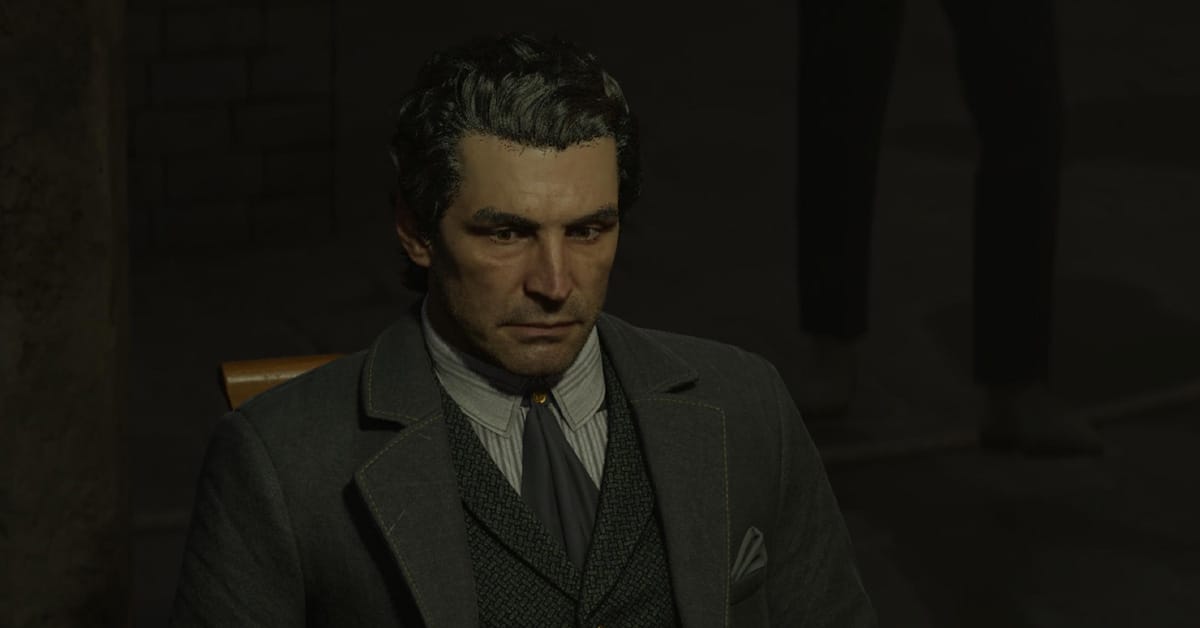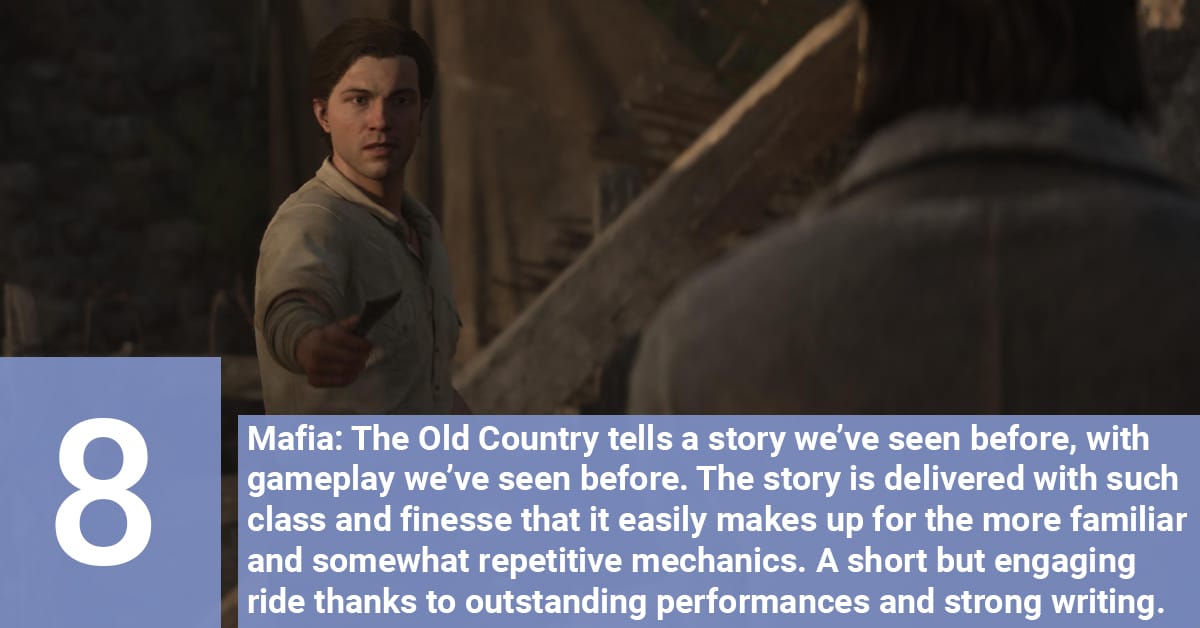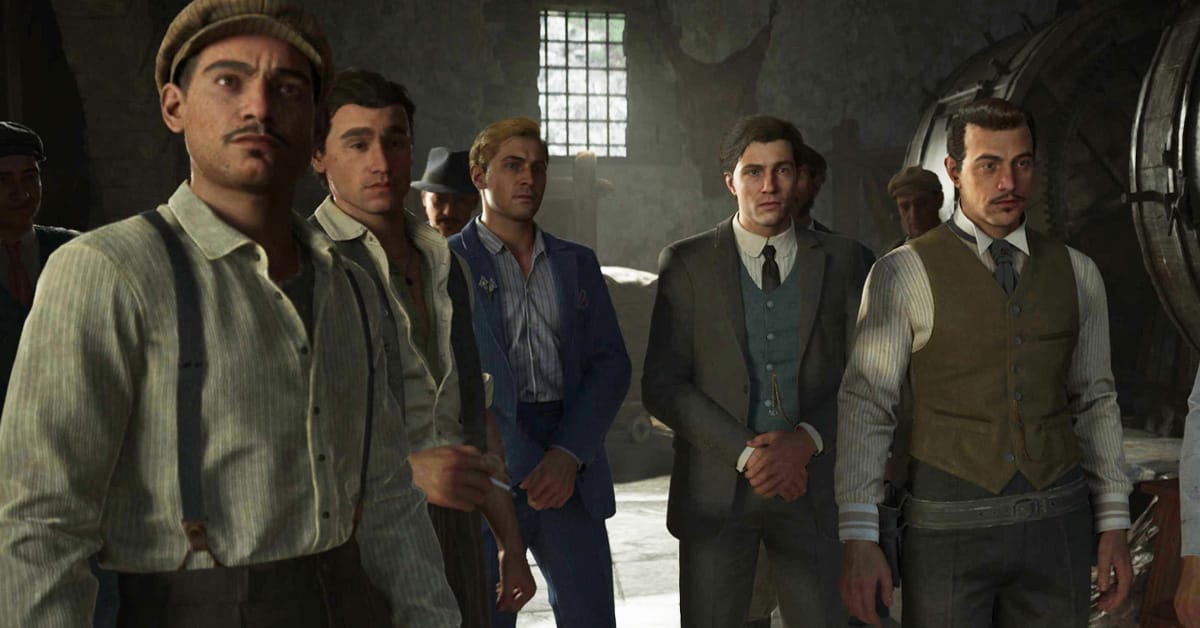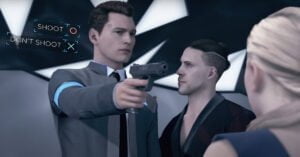The Mafia genre has always been close to my heart. These days I love fantasy and science fiction, but in my early teenage years I only played games that felt “realistic.” No strange creatures, no bloodthirsty monsters, just stories set in a world we know with people we recognize. I still have a weakness for that, and Mafia: The Old Country is one of the few games that delivers exactly what I want.
The Godfather, The Sopranos, Boardwalk Empire: men in smoky backrooms making shady deals. Charismatic leaders treating the criminal underworld like a chessboard, fighting for territory, money and power. Long before the game even launched I knew it would feed that fascination.
The only question was whether it could convince me with its gameplay and design. I was excited to hear the game would return to a more linear structure. But was that excitement justified in the end?
(This review contains no spoilers, but the next section does briefly mention an early story event.)
Do you prefer to watch instead of read? I’ve got you. Scroll down to find my video review.
The Familiar but Always Satisfying Recipe of a Mafia Story

Mafia: The Old Country, developed by Hangar 13, follows protagonist Enzo Favara. At the age of five, Enzo was sold by his father to work in a Sicilian sulfur mine. After twelve long years he finally manages to save enough money to pay off his father’s debts and leave that life behind.
Unsurprisingly, things don’t go as planned. Circumstances force Enzo to flee from his overseer Il Merlo, a member of the powerful Spadaro clan. Luckily this is where one of those charismatic leaders I mentioned earlier makes his entrance. Don Torrisi is not pleased to see Il Merlo on his turf. After a commanding introduction, he puts Merlo in his place and decides to take Enzo under his wing.
From there the concept will feel familiar to anyone who has played a Mafia game before: you’ll need to prove yourself and climb the ranks of the Torrisi family. That begins with carrying crates, and before long it shifts to carrying dead bodies.
Mafia: The Old Country Is a Slow Burn, and Not Everyone Will Like That

Don’t expect to be firing pistols right away or playing the tough gangster from the start. Just like your fellow Torrisi family members, the game doesn’t take you seriously at first. It keeps you on a short leash, and since this isn’t an open world you only get to pull the trigger when the story allows it.
This benefits the storytelling, but it can come at the expense of immediate fun. Personally, I appreciated the slower pace. It gives Enzo’s rise through the criminal ranks a realistic arc and makes the inevitable explosions of violence hit even harder.
At times I genuinely felt like I was living the life of a small-time gangster in Sicily. Guided by our mentor Luca and Don Torrisi’s nephew Cesare, we learn both the appealing and the ugly sides of the trade.
We’re not only part of the Torrisi family, but of our town and culture as well. Hangar 13 brings all of this to life in a convincing and authentic way, and that takes time.
It Is All Very Cliché, but It Works Thanks to Fantastic Performances

This game has everything you would expect from the genre: a wise and seasoned mentor, an impulsive friend, a calculating yet ruthless boss, and of course a forbidden romance with the boss’s daughter. None of it is new, and yet Mafia: The Old Country manages to turn it into a story that feels engaging and emotional. Much of that is thanks to the excellent performances of the voice cast.
“None of it is new, and yet Mafia: The Old Country manages to turn it into a story that feels engaging and emotional.”
The first thing I did when booting up the game was switch to the Sicilian language option. I often find that playing in the native tongue helps me sink deeper into the atmosphere. It worked wonders for me recently in Martha is Dead, and I hoped the same would be true here. Unfortunately, I quickly discovered that the lip sync is locked to the English version. That broke immersion more than the Sicilian dialogue enhanced it, so with some reluctance I switched back to English.
In hindsight, that might have been a blessing. Every voice actor in The Old Country delivers a fantastic performance. Don Torrisi, voiced with a pitch-perfect gangster growl by Johnny Santiago, steals every scene he appears in; the exact kind of larger-than-life presence you expect from a mafia boss. But the rest of the cast, big or small, is just as convincing. The accents and scattered Italian phrases were more than enough to make me believe I was really walking the streets of old Sicily.
Sicily Is Beautifully Realized, but Could a Semi-Open World Have Worked Better?

The setting itself also plays a huge role in creating the game’s atmosphere. Sicily in the early 20th century looks stunning: colorful flowers surrounding the estate, narrow cobblestone streets, cozy little terraces, and sweeping landscapes. Spending around fifteen hours in this world felt like a privilege.
In fact, it was so beautiful that I often wished I could explore more. I was never a fan of Mafia 3. For me the open world worked against the game, with repetitive missions and too much filler to justify its length. But looking back at Mafia: The Old Country, I actually would have welcomed a touch more freedom here. Not because I wanted to wander endlessly, but because the linear design sometimes clashed with the mechanics on offer.
Take customization, for example, which I’m a sucker for. The moment I saw that Enzo could swap between different outfits, hairstyles, and beards, I couldn’t help but grin with satisfaction. I imagined him in sharp three-piece suits, with a stylish hat and a well-groomed beard. But in practice, it played out differently.
Since you rarely have to drive yourself to missions, you don’t often get the chance to swing by your wardrobe for an outfit change. It only happens when the story conveniently places you near your house, which especially in the early hours of the game isn’t very often.
I’m a Gangster, so Let Me Flaunt What I’ve Got

As the game progresses you unlock more outfits, hairstyles, and beards, but many of them aren’t considered “story outfits.” If you select them, they won’t always show up in cutscenes. That breaks the carefully crafted immersion, and for me that trade-off just wasn’t worth it.
The same goes for cars. You can buy some beautiful vehicles, but you’re rarely given the chance to actually purchase or use them. I can count on one hand the number of times I drove to a mission in my own car.
This also strips away much of the motivation to collect Dinari, the currency used for these upgrades. It often felt like the mechanics on offer didn’t fully fit the game’s strict linear structure.
I never wanted Mafia: The Old Country to be a full open world, but I do think a handful of hubs would have gone a long way. Driving there ourselves would have at least given us the chance to show off our newfound wealth to the less fortunate citizens of Sicily. That in turn would have made me more eager to gather Dinari and invest in upgrades. After all, what’s the point of all these criminal activities if I can’t show off the spoils?
Sneaking… and a Bit Too Much Stabbing

Another element that adds to the realism is that Enzo is often better off staying unseen. In some scenarios stealth is required, in others it is strongly encouraged.
For the sake of this review I let myself get spotted a few times (or at least, that’s what I tell myself) just to see if I could push through. Sometimes it worked, but more often I was quickly overwhelmed by enemies and found it smarter to reload and try again with stealth.
Fortunately, staying hidden isn’t very difficult. Activating your instinct highlights enemy silhouettes through the environment. You can swap between covers and move around them freely. Most patrol routes are predictable, and more importantly, they rarely overlap. That makes it easy to sneak up on a guard with his back turned and quietly take him out without fear of being noticed.
“Nine times out of ten I didn’t need a plan; just a bit of patience.”
Nine times out of ten I didn’t need a plan; just a bit of patience. Wait for someone to turn away, eliminate them, and move on. You can dump bodies into containers, but because patrol routes are so separate, it’s often unnecessary.
Enemies can be taken down non-lethally or stabbed with your knife. Choosing the first option requires a bit of button-mashing (though that can be turned off in the settings). Choosing the second consumes knife durability.
That knife isn’t just important for stealth kills; it’s also needed to open chests scattered through the world. Every action drains durability, which you restore with whetstones.
The knife once again takes center stage during boss fights. At first these encounters are fun, but they soon fall into repetition. Each one plays out as a mini-game where you dodge, parry, break your opponent’s guard, and stab when you see an opening. Once you’ve worn down enough of their health, the fight is interrupted by a flashy animation. Then it’s back to the same cycle. Rinse and repeat. Some more diversity for the boss fights would’ve gone a long way.
Gunfights Are Basic, as They Should Be In a Grounded Experience

Of course you also get access to a small arsenal of firearms. You can carry two at a time: shotguns for close-range damage, hunting rifles for long-range, pistols; you know the drill. There isn’t much to say about the gunplay: it’s solid, serviceable, and basic. Headshots are always fatal no matter the weapon, which feels right for a game that aims for realism.
The enemies are fairly straightforward as well. You’ve got the big guys who try to close the distance with heavy weapons, gangsters who stay back and shoot from afar, and a middle type that sits somewhere in between. If you don’t go for headshots, most enemies go down after about three body shots.
By default, aiming is set to “snap,” meaning your reticle locks onto an enemy automatically. I turned this off so I had to line up my shots manually. It made the headshots feel more satisfying and added some more challenge to the standard difficulty I was playing on (which was actually quite easy).
Looting enemies and searching rooms almost always gives you what you need. I rarely found myself short on bandages, whetstones, weapons, or ammo.
Hidden throughout the world you’ll also find golden statuettes that act as charms, granting small bonuses like better loot chances, quieter footsteps, or a faster aim-down-sights time.
Gunfights don’t just happen on foot either. You’ll sometimes be firing from horseback or from the seat of a car. In those cases the game re-enables snap targeting so you can focus on steering. It all looks stylish and dramatic, but the heavy scripting does remove some of the sense of urgency for the player.
Chases Are Heavily Scripted, Which Takes Away Player Urgency

It quickly becomes clear that the chase sequences are tightly scripted. The game wants you to win races, and it shows: opponents will sometimes slow down and wait for you to catch up, or speed ahead unnaturally when the story demands it.
One race even has multiple checkpoints that pulled me closer to my rival than I actually was at the time. At one point it even bumped me from third place to second. Moments like that make it feel less like you’re in control of a race and more like you’re watching a movie dressed up as a game.
To claw back a sense of control, I switched on Simulation Driving and manual gear shifting in the options. That at least made me feel more in the driver’s seat, and it punished my mistakes more harshly. Manually shifting gears also felt strangely satisfying, so I would recommend it to anyone looking for even more immersion while cruising around.
Some Loose Scraps

- A scene where Enzo executes someone for the first time would have hit harder if you hadn’t already killed a dozen guards just a minute earlier.
- One of the locations, San Celeste, also appeared in the very first mission of Mafia II.
- This is the first Mafia game that doesn’t feature a wanted system.
- Through chapter select you can actually drive around the open world in your car. Quite a strange way of sneaking in some open-world gameplay.
- Photography is introduced as a mechanic, but you rarely use it in the main story. You can, however, find more opportunities for photos by free roaming in the way mentioned above.
- Carlo Rota, who played Morris O’Brian in one of my all-time favorite TV shows (24), voices Barone Raffaele Fontanella.
Conclusion

Mafia: The Old Country tells a story we’ve seen before, with gameplay we’ve seen before. The difference is that the story is delivered with such class and finesse that it easily makes up for the more familiar mechanics.
Thanks to outstanding performances and writing that takes its time to flesh out Enzo’s journey, I spent fifteen hours feeling like a true part of Sicily and the Torrisi family.
The gameplay leans heavily on fairly standard stealth and gunplay, with a few too many one-on-one knife fights, but the strength of the narrative more than carries it through.







